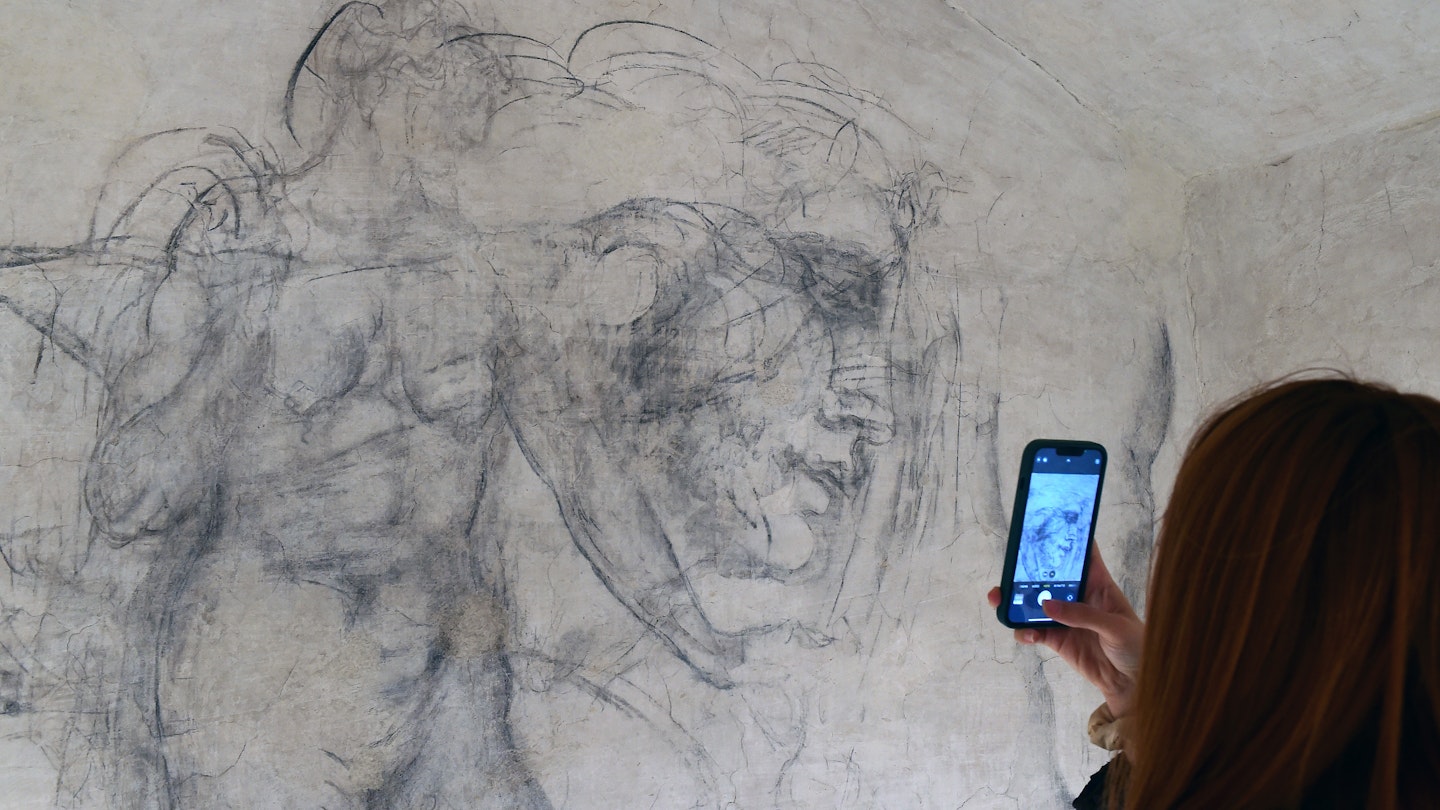Explore Michelangelo’s Secret Room and the Via Triumphalis Necropolis
When visiting Italy, it always feels like there’s something new to explore. From the newly accessible Roman remains of the Acra Sacra di Largo Argentina to the recent reopening of Cinque Terre’s Via dell’Amore, not to mention the ongoing discoveries in Pompeii, the list of attractions is constantly evolving. Just when you think you’ve seen it all, there’s always a reason to return.
Historic Sites in Florence and Rome
Among the latest incentives to visit are two historic sites in Florence and Rome that have just become accessible to the public.
Michelangelo’s Hidden Room in Florence
In Florence, a recently unveiled long-kept secret has emerged— a hidden room that is said to house works by the renowned Italian Renaissance master Michelangelo. This underground space, discovered almost 50 years ago beneath the Medici Chapels in the San Lorenzo Basilica, is believed to have served as Michelangelo’s refuge for two months in 1530. Within this intimate chamber, he allegedly left his mark, adorning the walls with dozens of sketches. On November 15, the room was finally made accessible to the public.

Fleeing from the wrath of Pope Clement VII due to his strained relationship with the ruling Medici family, it is believed that Michelangelo sought safety here during the pope’s siege on Florence in 1530.
The hidden room was discovered in 1975 by Paolo Dal Poggetto, a former director of the Medici Chapels. Initially mistaken for a mere storage area for coal, it was only upon finding charcoal and chalk drawings on the walls that Dal Poggetto felt there was more to this room than meets the eye. After weeks of meticulous work, the plaster was carefully removed, revealing artwork reminiscent of Michelangelo’s renowned masterpieces. Scholars speculate that these walls served as a canvas for sketching out ideas for future projects, as well as preserving sketches of his earlier works.
The drawings found in the room, including references to works like the head of the Laocoön, the statue of David, and frescoes similar to those that adorn the roof of the Sistine Chapel, are still being examined by art critics before their full attribution to Michelangelo. Regardless, it remains an impressive collection of Renaissance artwork.

“The moment you enter that room, you simply are speechless,” Paola D’Agostino, the director of the Bargello Museums, a group overseeing the Medici Chapels, commented.
“As your eyes adjust to the room’s dim lighting, you start seeing all the different drawings and all the different layers,” she added.
Having remained off-limits to visitors for decades due to safety risks and potential damage to the drawings, the room is now opened on a trial basis until the end of March next year with limited access.
The Via Triumphalis Necropolis in Rome
Meanwhile, in Rome, the Vatican made an ancient Roman burial ground more accessible, providing visitor access to the Via Triumphalis Necropolis, known as the “city for the dead.” This burial ground dates from the first century BCE to the fourth century CE and is significant as it covers diverse social classes, from the poorest to the wealthiest.

More than 200 individual burials and 40 sepulchral buildings adorn the area, featuring frescoes and stuccoes that serve as tributes to the deceased.

The Vatican describes this site as exceptionally well-preserved, providing valuable insights into ancient Roman pagan funerary practices, often influenced by superstition and fear of the afterlife. “In many cases, inscribed funerary stelae (monuments) have been found, clarifying the identity of the deceased and their individual stories,” the Vatican Museums stated.
Previously, access to the necropolis was restricted to approved academics, students, and specialists. However, general public access has now been granted via a newly opened gate overlooking Risorgimento Square.

This expansion coincides with the Vatican’s new exhibition, Life and Death in the Rome of the Caesars, which opened on November 17. Visits to the necropolis cost €8.50 per person and are available on Fridays and Sundays.




